In my lamentably final submission to Beerlandia, a column I created for 1859 Magazine, I express my gratitude to the place and the people that made everything possible.
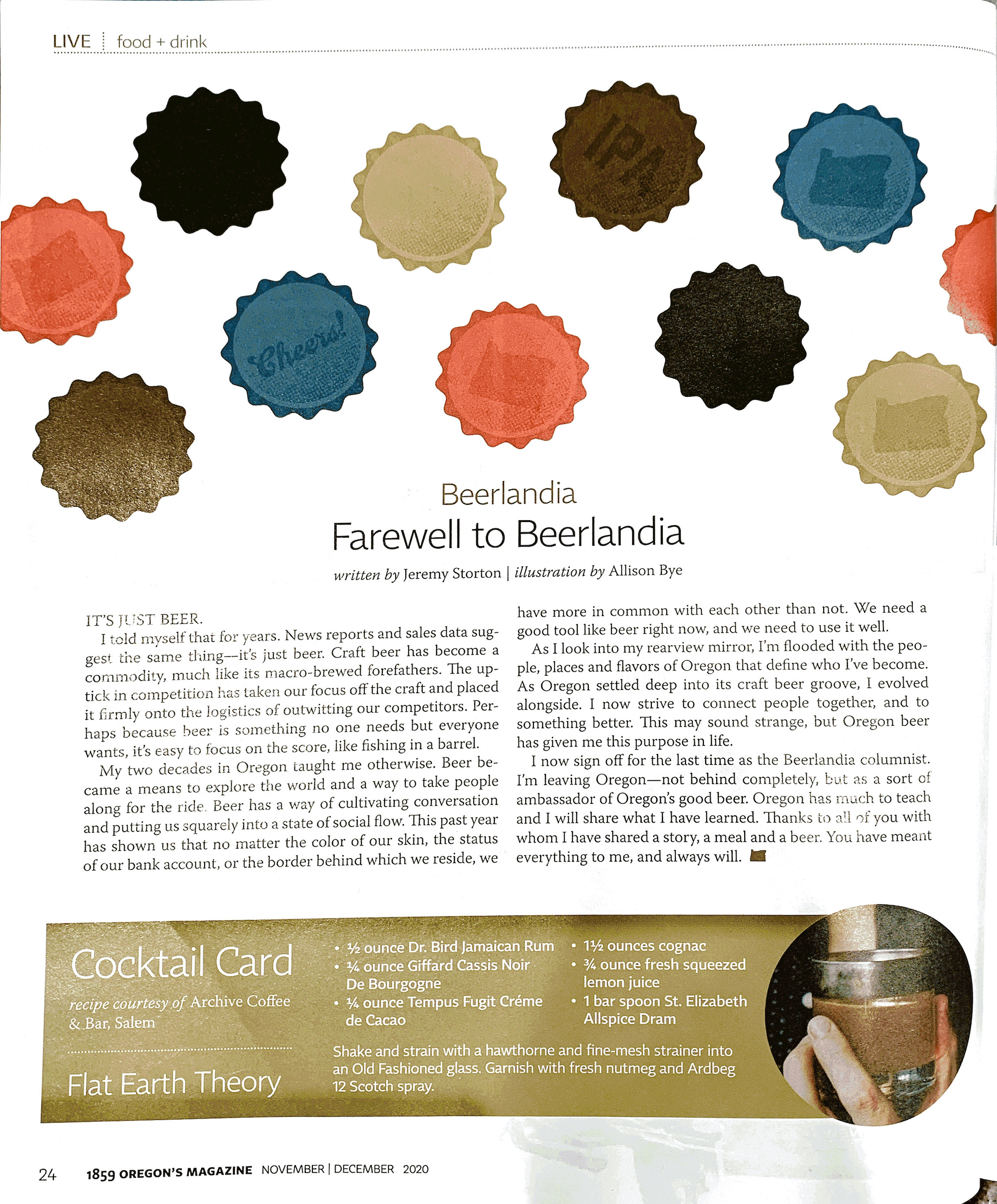
Freelance Work
In my lamentably final submission to Beerlandia, a column I created for 1859 Magazine, I express my gratitude to the place and the people that made everything possible.

1859 Magazine, Beerlandia July/ Aug 2020
Some of my favorite breweries and tap houses you must visit in Central Oregon.
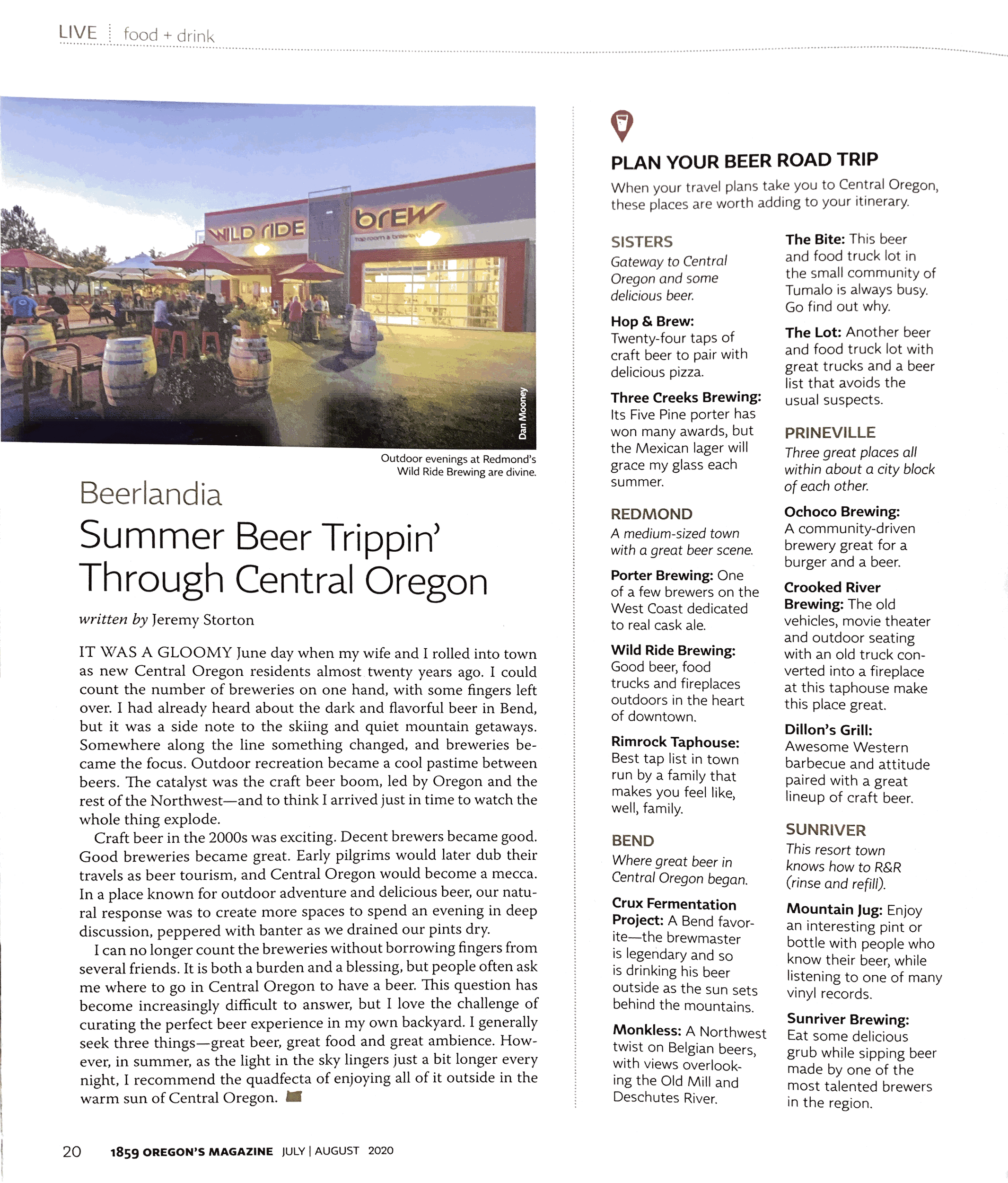
Written for the upcoming book from the Deschutes River Conservancy
By Jeremy Storton
A few winters ago we were blessed with a perfect weekend. The weather was spectacular, in fact, way too sunny and warm for Central Oregon in February. Your mother and I prefer the water and the sun and therefore tend to hibernate during winter. But, with the weather so good we happily emerged to cure our cabin fever. We decided to celebrate our liberation by taking you both to the Old Mill in Bend. Years ago the Old Mill was nothing more than dilapidated brick buildings full of squatting barn swallows. The once puffing smokestacks sat dormant for decades. Now they sit as a monument of modern progress surrounded by a theater, restaurants, and retail chains. I took you there neither to shop nor to eat. We went there simply to walk along the river.
I’ve always viewed the Old Mill as an unusual trichotomy of converging worlds. The mill buildings are remnants of generations past and our dubious relationship with nature. The renovated Old Mill of the present culture is now a center for shopping, eating, and entertainment with a view. Meanwhile, nature asserts her presence as the Deschutes slices its way right through the middle of it all. It’s an interesting balance of seemingly opposing worlds, not unlike the concept of deep ecology.
I learned about this concept long ago. Deep ecology is an idea that suggests we humans are an equal part of nature and that we ought to act accordingly. Riparian habitats do so much for the human and natural ecosystems, but sadly, they can easily be thrown out of balance. Come Summertime, that stretch of water on the river will be filled with floaters and paddlers, and all the flotsam of their presence left behind. On our sunny winter day, however, the river was clean and quiet except for the calling of the birds. So, we walked along the river because I thought it would do us some good.
We strolled along the path, Cruz on my shoulders and Vaughn darting back and forth playing with sticks. Years prior I taught school children about plants and birds along estuaries. I wanted to share those experiences and point things out to you. “See those plants,” I said, “the ones that look like fuzzy hot dogs on tall sticks. They’re cattails.” Even Cruz sat up to look at hearing the words, “hot-dogs” and “cat-tails”. I explained that cattails used to help people find freshwater and provided them with food and fibers to use for many things.
A team of geese flew overhead honking as they went. They flew in the familiar V pattern, allowing them to draft behind each other. We tried speaking Goose and honked back at them. Vaughn, you asked me about the blackbirds with the white bills and blood-red eyes. “American Coots,” I told you. The ducks, however, were by far your favorite. We also tried to speak Duck. I think the ducks may have quacked back at us, disapproving of our dialect. I told you both that they are like us. Small flocks of ducks consist of a mommy, a daddy, brothers, and sisters. But, unlike us, in the duck world, the boys are the pretty ones. You both got a kick at the idea of the pretty boy birds in all their pretty makeup.
We walked further until we came to a sign that read, “Fragile Riparian Area. No Trespassing.” Next to it was a slightly worn path. I imagined it was used by someone impatiently taking a shortcut to the water. Months later that path was still healing from the wound. “Do you guys know what Riparian means,” I asked? Your confused looks confirmed what I already knew. This was a bigger topic than you were ready for, but I wanted to begin the process of you learning about it.
I told you that a riparian habitat is where land and water meet. I see it as a unique place where vegetation and creatures become something greater in the convergence of multiple habitats. Riparian birds are not only identified by their flight, but also by their ability to swim. It is a place of constant change yet in constant balance. I spent my youth in the water. I fell in love with the interface of land and water long ago, so to me, it feels like home.
I tried to explain to you both that we don’t tromp through the bush to get to the river. Riparian habitats are fragile and are easily thrown out of balance. “It’s like a family. It’s like us,” I told you. “If one of us got sick, the rest of us can get sick too.” “But,” I continued, “if we help take care of it, then everyone is happy. The people, the cattails, the coots, and the ducks.”
I didn’t expect this statement to sink in all the way. It was more important that you both learn to look at nature as a partner. I wanted you to begin to see the worn path as a wound, the ducks as a family, and the river as a companion. I wanted you both to eventually learn to evaluate our impact on the land and assess the balance.
Since I taught other children about nature, I wanted to teach you a little about my past, about our present culture, and allow nature to slice its way into our lives. Mommy and I have spent a lot of time on trails, on rocks, in the forests, and especially the ocean. I hope you will learn about nature and fall in love with it just as we did.
That is why I planned our outing. I wanted to take advantage of the warm winter sun. Despite the constant change in our lives, I wanted to seek balance with all of you out in nature as a family. I wanted to laugh with you about the cattail hotdogs and the pretty boy birds. Most of all, I’m glad I got to teach you both about one of my favorite words, Riparian.
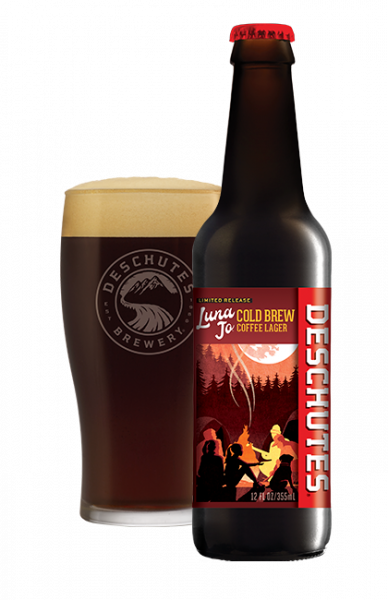
Working with Deschutes Brewery on a new beer release was a dream assignment.
How can I help you tell your story?
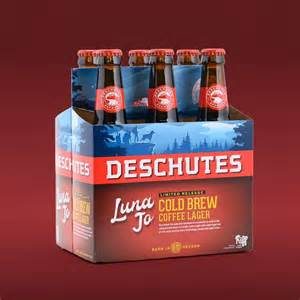 “I remember doing those. That was us… and that was us.” Paul Evers spent many years creating and directing the look and feel of Deschutes Brewery. He reminisced while looking through the brewery’s old logos and labels he designed. Old bottles were on display as if in a museum, a homage to what got them where they are today. I paid my respects to one of my old favorites, Buzzsaw Brown and the rest of the once glorious Bond Street Series. I first visited Deschutes Brewery in the early 90s when it was nothing more than a microbrewery with dark beer in a sleepy ski town. I moved to Central Oregon about 10 years later, just in time to watch Deschutes go from small brewery to top ten craft breweries in the country. For me, there was a personal pride, like watching a local kid grow up and make something of his or her self. Paul was the creative force behind Deschutes’ rebranding when it took off with the Craft Beer Rocket of the 2000s to become a major player on the national craft beer scene. Watching Paul look over his past body of work was like witnessing a musician recount stories of this Grammy and that Gold Record.
“I remember doing those. That was us… and that was us.” Paul Evers spent many years creating and directing the look and feel of Deschutes Brewery. He reminisced while looking through the brewery’s old logos and labels he designed. Old bottles were on display as if in a museum, a homage to what got them where they are today. I paid my respects to one of my old favorites, Buzzsaw Brown and the rest of the once glorious Bond Street Series. I first visited Deschutes Brewery in the early 90s when it was nothing more than a microbrewery with dark beer in a sleepy ski town. I moved to Central Oregon about 10 years later, just in time to watch Deschutes go from small brewery to top ten craft breweries in the country. For me, there was a personal pride, like watching a local kid grow up and make something of his or her self. Paul was the creative force behind Deschutes’ rebranding when it took off with the Craft Beer Rocket of the 2000s to become a major player on the national craft beer scene. Watching Paul look over his past body of work was like witnessing a musician recount stories of this Grammy and that Gold Record.
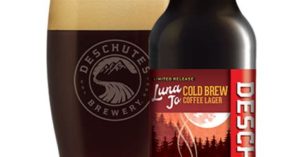 Paul loved craft beer and branding so much he co-founded another beer venture in town. Once that turned successful he went on to yet another. This time it was coffee. Artisanal, cold-brewed coffee. That’s what he came back to Deschutes Brewery to talk about, coffee.
Paul loved craft beer and branding so much he co-founded another beer venture in town. Once that turned successful he went on to yet another. This time it was coffee. Artisanal, cold-brewed coffee. That’s what he came back to Deschutes Brewery to talk about, coffee.
We were just outside the tasting room at the main brewery. The tasting room is the bar/ gift shop combo where visitors and locals come together for tours, free beer samples, and swag. But, instead of expensive tchotchkes that break the day after you return home, this gift shop is filled with some amazing and innovative beer. In some cases, it is verifiably filled with the best beer in the world. Just outside, three-story-tall fermenters holding 31,000 gallons of beer welcome guests as they enter. Nothing about Deschutes Brewery is small anymore, not even Bend, the city in which it resides. It’s hard to remember bare land where the main brewery now sits, once a high desert landscape giving way to an alpine forest as one ascends to Mt. Bachelor for a day of skiing on the red chair.
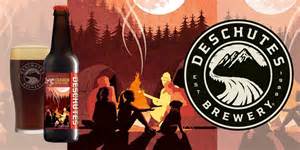 I followed Paul and his son Bobby, both co-founders of Riff Cold Brewed, up the stairs into the brewery. Veronica Vega lead us down the catwalk and waved one of her co-workers over for a quick meeting to tidy up one last detail on another project. Now the Director of Product Development, she is a brewer who rose to prominence from a part-time tour guide post. Before that she tracked raptors for the forest service. She is petite and with a humble demeanor that puts people at ease. But, in her position, not only at Deschutes Brewery, but in American Craft Beer, she occupies an aether that few brewers will ever experience. Running R&D for an international brewery is a bit like brewing special forces and she has the grit and grace of a commander. On any given day she balances the resources, the freedom and the pressure of being under a microscope, but you’d never know it by watching her. She is a mom, after all. Everything after that is all just gravy.
I followed Paul and his son Bobby, both co-founders of Riff Cold Brewed, up the stairs into the brewery. Veronica Vega lead us down the catwalk and waved one of her co-workers over for a quick meeting to tidy up one last detail on another project. Now the Director of Product Development, she is a brewer who rose to prominence from a part-time tour guide post. Before that she tracked raptors for the forest service. She is petite and with a humble demeanor that puts people at ease. But, in her position, not only at Deschutes Brewery, but in American Craft Beer, she occupies an aether that few brewers will ever experience. Running R&D for an international brewery is a bit like brewing special forces and she has the grit and grace of a commander. On any given day she balances the resources, the freedom and the pressure of being under a microscope, but you’d never know it by watching her. She is a mom, after all. Everything after that is all just gravy.
We followed her to the brewer’s conference room. Evidence of beers that once were, or would have been, were scattered around the room. The smell of hops in a boil kettle permeated throughout like sea air at the coast. Kyle Mathias joined us there. He is the head brewer of the pilot brew system, Vega’s Lieutenant Commander of R&D. I listened as they reminisced about Deschutes back in the day, the beers loved and the beers lost. They also bantered as only close friends can do. I thought it was lovely. As a fan of beer and Deschutes Brewery, I had dreamt of being a fly on these walls, listening to the brewers discuss new ideas and argue over labels. But these were busy people. I launched in with a question, “What is the origin story of Luna Jo,” I asked.
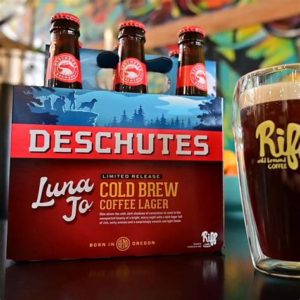 Ideas for new beers can come from anywhere. Some are a new take on an old style. Some are inspired by a chef’s desire for interesting flavors. Luna Jo is yet another in a series of cutting edge collaborations between Deschutes Brewery and Riff. But, this beer began with good friends who shared a story that sparked an idea.
Ideas for new beers can come from anywhere. Some are a new take on an old style. Some are inspired by a chef’s desire for interesting flavors. Luna Jo is yet another in a series of cutting edge collaborations between Deschutes Brewery and Riff. But, this beer began with good friends who shared a story that sparked an idea.
I expected to hear something along the lines of data points, marketing jargon, and demographics. I figured, as big as Deschutes Brewery had become, that behind the curtain there was no wizard, but a machine in a wizard’s cloak. Paul, Bobby, Kyle and Veronica surprised me. They smiled at my question and began talking about relationships, of unexpected flavors, of doing projects because they were different, fun and good for building community. Then, they talked about Luna Jo and the Sobremesa.
There really isn’t an English word that accurately translates the Sobremesa. It’s, “the Latin American tradition of lingering over coffee after a big meal,” Veronica told us. Think of it as a post-dinner happy hour where people spend time around the table talking, drinking and gesticulating wildly when the story really gets going. These are the times when memories are made and relationships are either built or solidified. Veronica recounted the times when she would head to Deschutes Brewery after work, before working there, knowing the very act of ordering a pint would conjure good friends to spend the evening with. It was a way to find a sense of profound warmth on a cold night. These are the Sobremesas she had in mind when her team concocted the idea for the brew. “The pubs and people meeting us and connecting with us, that is where I’ve landed on what makes craft, craft,” Veronica continued. “It’s about relationships,” Paul chimed in. “It’s about relationships,” Veronica agreed.
Paul nodded as Veronica spoke, but he had another take on the matter. To him, the collision of cold-brewed coffee and beer was more than a collaboration between old friends. He talked about being disruptive and challenging expectations. While coffee is a common addition to dark stouts, rarely does one experience the complex flavors of dark chocolate, toffee and coffee in an Amber Mexican-style lager. The opposition is like night and day but, if well balanced, the synergy could be as thrilling as a good conversation, like on a first date that is going very well.
As kids, we tried to squeeze the positive side of two magnets together because that made sense. After realizing it doesn’t work we learned not only that opposites attract, but they can form a powerful bond that is difficult to break. I thought about this when Paul explained that this beer is about those opposites and about the powerful synergy of the light and the dark. The rich flavors of Peruvian coffee, dark chocolate and toffee, usually promise a good start to the morning. We often book-end our day with a coffee or beer that serves to celebrate the struggles and triumphs of work while we prepare for the evening ahead. Luna Jo is a dichotomous beverage meant for inviting a state of social flow during these times. It facilitates the balance of opposing forces such as the excited calm an athlete feels before a game, or the nervous adoration before we say, “I do”. Luna Jo celebrates these experiences when opposites collide to create something far more interesting.
“A lot of stuff is obviously happening politically, and there’s a lot left to be desired.” Kyle spoke up and added a more pragmatic approach to a beer meant to bring people together. He may not be the first person to have offered a beer as a means to reach across the proverbial aisle, then again, those beers may not have been as interesting or diverse as Luna Jo. “That’s where this beer has its roots for me, these unexpected things, on any given day you might not think pair well together, and then you bring them together, it turns into this really cool thing,” he said.
“That’s what this is about.” As if on cue, Bobby Evers put a bow on the sentiment in the room. “The gathering or bringing together, that’s where ideas generate and relationships are grown,” he said. Many people love coffee, many love beer. Within those beverages we have preferences. To him, Luna Jo offers up different approaches to ultimately arrive at the same point.
Our culture is a creative melting pot that sometimes resembles a Star Wars Cantina. We are all different, each with different stories to tell. Our heritage is that our opposition brings us together. This is our strength. Even though combining cold-brewed Peruvian coffee with cold -fermented Mexican lager in Bend, Oregon seems a bit cutting edge, when it’s done with friends who love and respect each other, the connection becomes apparent. This is who we are. We collaborate. We try. If we fall, we laugh, get back up, have a beer, then try harder next time. This is our Sobremesa. This is our story. I suggest you grab a pint of Luna Jo and linger around the table, because now it’s time to tell us yours.